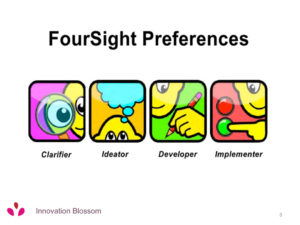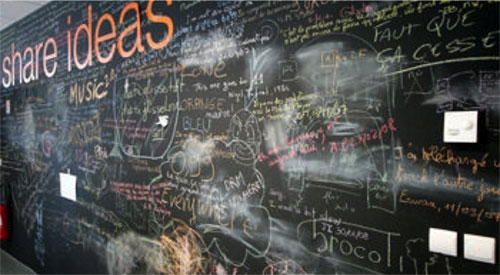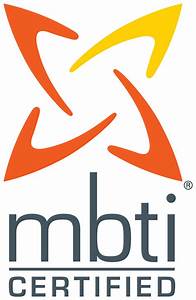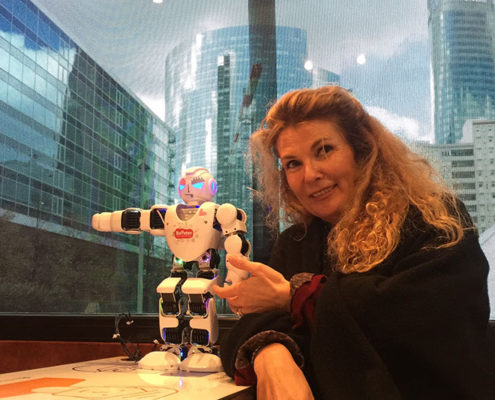Collectif Coaching
HEC Executive Coaching
 According to the HEC Executive Coaching methods, an animation that facilitates the expression of solutions and commitment to action . For transformation, the whole program is facilitated in collective coaching: from the expression of the vision, to the impacts on the processes until the cultural evolutions to be adopted.
According to the HEC Executive Coaching methods, an animation that facilitates the expression of solutions and commitment to action . For transformation, the whole program is facilitated in collective coaching: from the expression of the vision, to the impacts on the processes until the cultural evolutions to be adopted.
The implementation of the resulting action plans is accelerated thanks to the co-construction dynamic.
Design Thinking(certified)
Put the user at the heart of innovation
Innovation Games (certified)
Arouse creative intelligence through play
Co-development
Excellence by sharing practices in groups
The co-development group brings together professionals who want to improve their professional practice to adapt or push it to a level of excellence.
 The participants
The participants
- exchange their points of view,
- share their practices in a spirit of mutual encouragement.
Freedom of speech and benevolent listening allow the opening of fields of possibilities and actions of excellence.
The co-development group can be a player in the strategy from co-construction to deployment.
Depending on the purpose and the type of participants (team, project, sector trades …), it allows this “community” to co-coach on achieving its results
MBTI (Certified Level 2)
Get to know each other better
The MBTI® questionnaire divides individuals into 16 psychological types
The 16 MBTI® personality types®
 The Myers-Briggs Typological Indicator (MBTI®) is based on Carl Jung’s theory of psychological types and indicates the preferences of your personality in four dimensions:
The Myers-Briggs Typological Indicator (MBTI®) is based on Carl Jung’s theory of psychological types and indicates the preferences of your personality in four dimensions:
- From where you draw your energy and where you prefer to direct it: Extraversion (E) or Introversion (I)
- The type of information you spontaneously collect and trust: Sensation (S) or INtuition (N)
- The process you prefer to use to make decisions: Thinking (T) or Feeling (F)
- How you prefer to approach the outside world: Judgment (J) or Perception (P)
The four letters that make up your personality type can help you understand yourself and your interactions with others. To find out what your MBTI® personality is, you must complete the MBTI® questionnaire and have a discovery interview with a certified MBTI® practitioner
Discover the DNA of each personality type
The MBTI® Level II (Myers-Briggs Type Indicator) goes beyond Level I and shows that within each of the personality profiles, every individual is unique. It acts as a catalyst for improving personal and professional results by providing accurate information to facilitate the personal development plan.
What is MBTI® Level II? (Certified)
The MBTI® Level II is a Myers-Briggs questionnaire that goes to the heart of identity by tapping into the different facets of each Level I preference.
It makes it possible to read the unique “footprint” of an individual’s personality, by showing what differentiates him from people of the same type. Level I This results in a personalized profile and development plan that is perfectly adapted to coaching, training and learning. development of action plans and team cohesion.
With 120 questions it restores the 40 facets of the profile:
- Examine the subtleties contained in the MBTI® Level I expression
- Uses five behavioral facets to explore each of the four Level I dichotomies
- Emphasizes the uniqueness of each in each profile
- Define development actions through a series of important individual issues
STRONG (certified)
Career orientation by preferences
The Strong® Professional Interest Inventory provides reliable information about a person’s professional interests by helping them discover potential career paths they may not have considered, and by giving them a large amount of information. information on his approach to the world of work.
A questionnaire based on more than 80 years of research on how people with similar interests are employed, and what motivates them to work
- Examine six broad professional areas that determine how realistic, artistic, sociable, enterprising, conventional or realistic a person is
- Measuring preferences in 30 core areas of interest, whether arts or law
- Establish a ranking of the ten most compatible activities from 260 possible specific trades
- Describe an individual’s personal style in five workplace themes, such as teamwork, leadership, and risk-taking
It is based on many standards by profession and representative, taking into account age and gender.
It is based on Holland’s theory which groups all the trades in 6 professional domains named RIASEC
TKI (certified)
The world’s best selling conflict management tool
 The Thomas-Kilmann Conflict Mode Instrument (TKI ™) is a conflict management method based on a simple and quick questionnaire. By exploring different possible conflict management styles, it helps people identify and defuse them more effectively.
The Thomas-Kilmann Conflict Mode Instrument (TKI ™) is a conflict management method based on a simple and quick questionnaire. By exploring different possible conflict management styles, it helps people identify and defuse them more effectively.
85% of employees in Europe report being confronted daily with conflicts; Workplace tensions are clearly unavoidable and it is essential to manage conflicts effectively.
Conflict occurs when different points of view make the interests of two or more people incompatible. Conflict management involves understanding and reframing these points of disagreement in order to move forward positively.
By examining our preferred approaches to conflict resolution in terms of assertiveness and collaboration, the TKI ™ instrument uniquely identifies the extent to which our approach involves competition, collaboration, compromise, avoidance or conciliation.
Foursights (certified)
To define your innovator profile
It is a tool created more than ten years ago by Gérard Puccio, to measure the preferences of individuals among the key stages of the innovation process: clarification of the initial challenge, generation of ideas, development of ideas in solutions and implementation.
The goal: to encourage creativity, to promote collaborative work and to value each other’s strengths!
Indeed, in a process of change, each of us is naturally attracted to a mode of thought and interaction: the Foursight ™ profile thus gives us benchmarks and allows us to identify our trends, which stimulates us or the stage of the innovation process in which we are most comfortable. But beware ! Do not confuse “preference” and “competence”: this tool is not used to categorize people … let alone to stick a label.
The four “faces” of innovation
The Clarifiers: “A well-posed problem is with the ¾ solved” (A. Einstein)
 Methodical and orderly, Clarifiers take pleasure in exploring the contours of a problem, in examining all the details and doing a lot of research before venturing into the emergence of ideas. The risk: to be “paralyzed” when analyzing all the facts, figures and data of a situation.
Methodical and orderly, Clarifiers take pleasure in exploring the contours of a problem, in examining all the details and doing a lot of research before venturing into the emergence of ideas. The risk: to be “paralyzed” when analyzing all the facts, figures and data of a situation.
The Ideas: “Eureka! I have an idea … then two, then three! “
The imagination is the engine of the Ideas. Intuitive and flexible, they play willingly with the possibilities while having a global view of the subject. They do not hesitate to multiply ideas, to bounce from one solution to another without worrying about the details and without trying to bring them to term. The risk: stay in the abstract and develop no idea.
The Developers: “Anything worth doing, deserves to be done well” (Lord Chesterfield)
Pragmatic and structured, Developers express themselves in the planning and refinement of projects. They like to turn abstract ideas into practical and practical solutions, they attach importance to sorting and selecting the best possible solution. On the other hand, they may find themselves stuck in the search for perfection.
The Directors: “Let’s go!”
Directors like to turn ideas into reality. Their engine: action! Stimulated by the implementation and tangible results, they have a strong propensity to want to make things happen … sometimes with a little too much impatience.
The ideal project group? A heterogeneous group where each profile can express its strengths and advance the global innovation process!
How to define your Foursight ™ profile?
Gérard Puccio’s tool has been the subject of many years of research and experimentation. It is in the form of a test of forty questions and an analysis grid interpreted by certified consultants. Impossible to guess the profile of people without having done the test because many shades and combinations are possible, highlighting subtleties in the preferences of individuals.
As you can see, the ultimate goal is to get to know each other better and to work together better for a better innovation
QE Emotional Intelligence(certified)
Develop your QE
 I chose the EQ-i method, inspired by the work of Daniel Goleman and developed by Dr. Bar-On, as a cross-cultural approach that has made it possible to distribute it to more than 3 million questionnaires around the world.
I chose the EQ-i method, inspired by the work of Daniel Goleman and developed by Dr. Bar-On, as a cross-cultural approach that has made it possible to distribute it to more than 3 million questionnaires around the world.It will allow you to identify your strengths and areas to develop among the 15 emotional skills of the following scales: self-perception, individual expression, relationships, decision-making and stress management. Depending on the desired goal, it can give rise to an “individual”, “leadership” or even “360 °” report.
.
Ikigai
To define your purpose
Ikigai means in Japanese “the achievement of what one hopes for”. It is a philosophy of life that would explain the exceptional longevity of the inhabitants of Okinawa, the Island of Centenarians”. For these Japanese, finding a good reason to get up in the morning is the key to balance associated with healthy cooking and regular physical activity. Ikigai is based on flow, this feeling of harmony when we do something that gives us satisfaction.
In professional life, finding your ikigai means finding the fulfilling daily job that you have chosen and in which you find meaning.
To find your Ikigai you should take the time for introspection because it is essential to know yourself well. The method requires answering 4 main questions:
- what do you like to do in life?
- what are your skills?
- what can bring you an income?
- what does the world need?



















